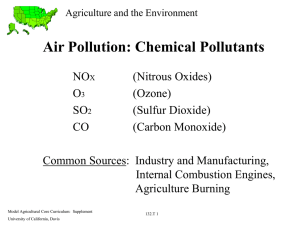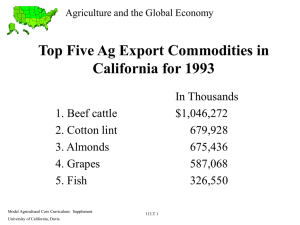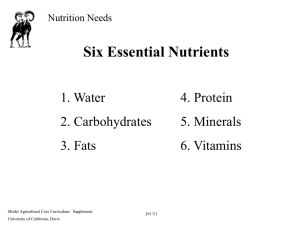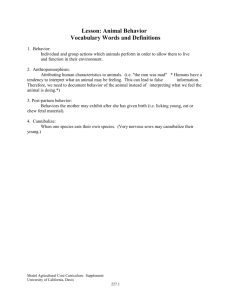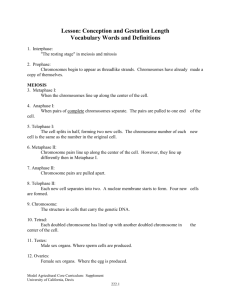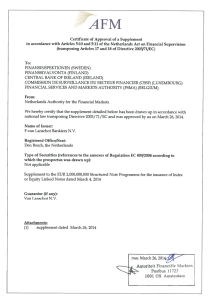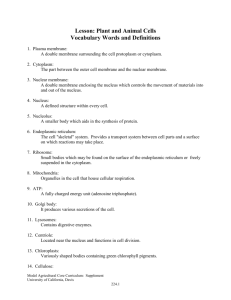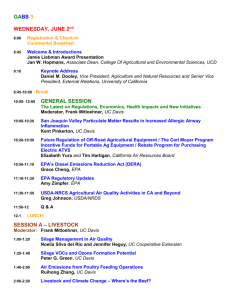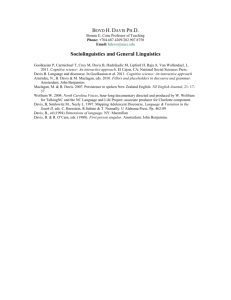MS-Word
advertisement
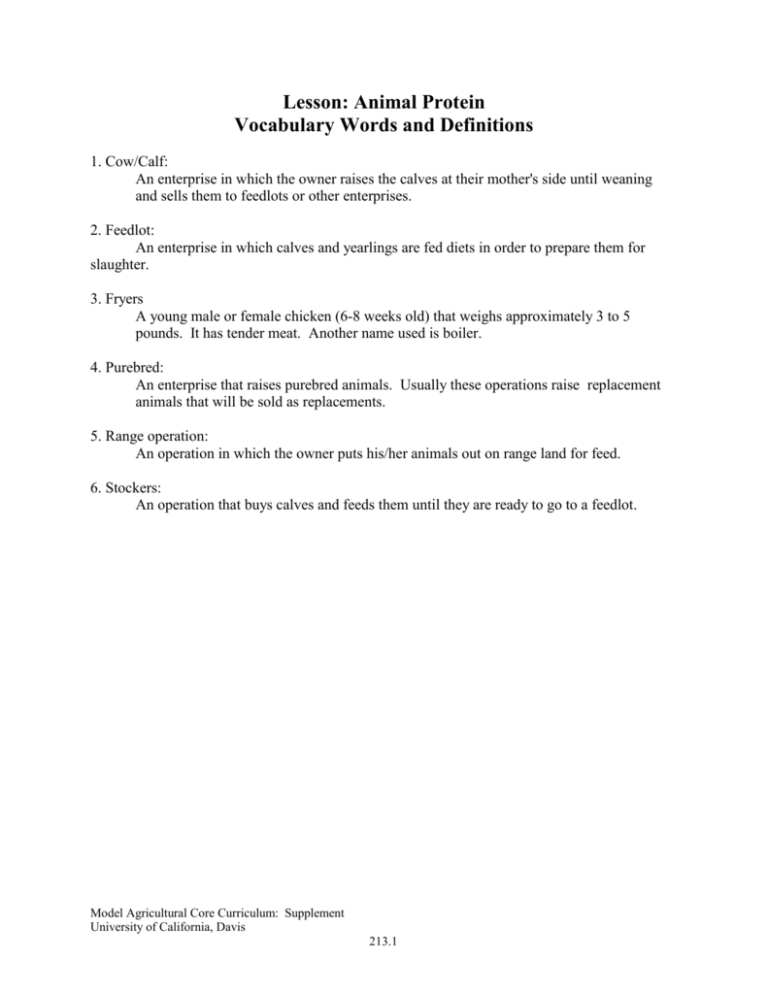
Lesson: Animal Protein Vocabulary Words and Definitions 1. Cow/Calf: An enterprise in which the owner raises the calves at their mother's side until weaning and sells them to feedlots or other enterprises. 2. Feedlot: An enterprise in which calves and yearlings are fed diets in order to prepare them for slaughter. 3. Fryers A young male or female chicken (6-8 weeks old) that weighs approximately 3 to 5 pounds. It has tender meat. Another name used is boiler. 4. Purebred: An enterprise that raises purebred animals. Usually these operations raise replacement animals that will be sold as replacements. 5. Range operation: An operation in which the owner puts his/her animals out on range land for feed. 6. Stockers: An operation that buys calves and feeds them until they are ready to go to a feedlot. Model Agricultural Core Curriculum: Supplement University of California, Davis 213.1 Name:__________________ Date:___________________ Title: What Animals May Give Us Lesson: Domestic Animals and Production Classroom Activity Purpose: Meat is not the only product that an animal may produce. There are many other food by-products and non-food by-products produced by different animals. The purpose of this activity is to introduce the different by-products that animals contribute. Activity Directions: In this activity, the student will be assigned a particular animal by the teacher. The student will research outside of class what the animal provides to our economy. Such things may include: clothing, tires, jello. After the students have been given sufficient time, they will report the food and non-food products produced by their animal to the class. Discussion can occur if time allows. Materials Needed: 1. Names of different kinds of animals. 2. Worksheet #1. Model Agricultural Core Curriculum: Supplement University of California, Davis 213.2 Model Agricultural Core Curriculum: Supplement University of California, Davis 213.3 Name:__________________ Date:___________________ Title: What Animals May Give Us Lesson: Domestic Animals and Production Classroom Activity Worksheet Name of your animal: List everything the above animal provides to our society. Be complete because you will be presenting this information to the rest of the class. You can research in magazines, books, or ask your parents. You can also look on the nutrition labels of food items, clothing tags, and other items that are produced by animals. Model Agricultural Core Curriculum: Supplement University of California, Davis 213.4 Name:__________________ Date:___________________ Title: By-Products and Food Sample Observation Lesson: Animal Protein Laboratory Purpose: Many people in the United States do not realize that there are many items that come from animals besides meat products. In this lab the students will be studying different products that may have animal ingredients. Procedure: Materials: (Provide a list or label which contains the ingredients for the following articles.) 1. 2. 3. 4. 5. 6. 7. 8. 9. 10. 11. 12. 13. 14. 15. medicines jello glue soap dog food leather cloth or shoe red meat suture material perfume make-up eggs feather pillow wool felt bone/blood meal for gardening Sequence of Steps: 1. 2. Start at separate stations and observe each product. Answer the questions in the observations section. Go on to the next station and repeat step one. Observations: 1. Draw the figure at the station in front of you on a separate piece of paper. (List the station number.) 2. On the same piece of paper that you did your drawing, answer the following questions. a. What does the product feel like? Model Agricultural Core Curriculum: Supplement University of California, Davis 213.5 b. c. What is the function of this product? List the ingredients for this product using their labels/list of ingredients. Model Agricultural Core Curriculum: Supplement University of California, Davis 213.6 Conclusions: 1. Why is it important for people to know that animals provide more then just meat products? 2. What are some animal products that your grandparents may have used that we no longer use today? Model Agricultural Core Curriculum: Supplement University of California, Davis 213.7 Lesson: Animal Protein Bank of Questions 1. Question: Answer: List some types of production enterprises for each species. 1. Cattle 2. Swine 3. Sheep 4. Poultry 1. 2. 3. 4. Cattle: purebred registered, cow/calf commercial, stocker, feedlot Swine: purebred, breeding, market, specific pathogen free, confined area Sheep: purebred, breeding, market, range, feedlot Poultry: fryers, turkeys, breeding, game birds 2. Question: Write down what each one of the following contributes to the total world protein demand. 1. 2. 3. 4. Answer: Milk contributes ______% in protein. Meat contributes ______% in protein. Eggs contribute ______% in protein. Aquatic animals contribute ______% in protein. 1. 33.7 % 2. 34.7 % 3. 4.4 % 4. 27.2 % To the teacher: This answer may change. Model Agricultural Core Curriculum: Supplement University of California, Davis 213.8
